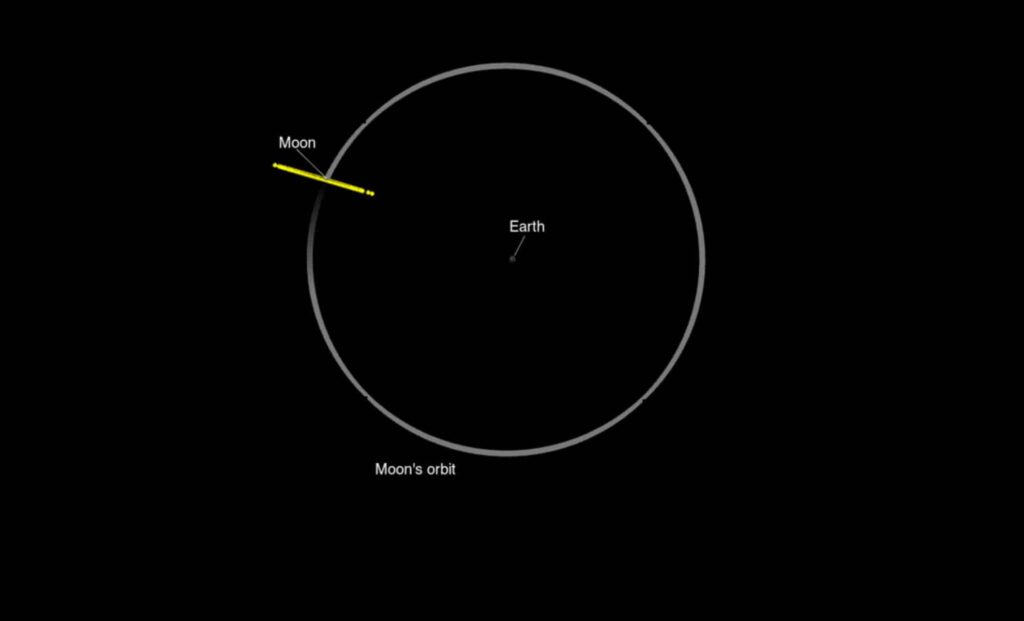NASA’s James Webb Space Telescope has provided a new update on asteroid 2024 YR4, revealing important findings that refine our understanding of its path. This asteroid, which had been a point of concern due to its potential to impact the Moon, is now being tracked with much greater accuracy. As reported by NASA, Webb’s observations have slightly increased the probability of an impact on the Moon from 3.8% to 4.3%. Despite this increase, experts continue to emphasize that if such an event were to occur, it would have no significant effect on the Moon’s orbit.
What is Asteroid 2024 YR4 and Why Does It Matter?
Asteroid 2024 YR4 was first discovered in December 2024, and initially, it presented a small but notable risk of impacting Earth. However, as more data came in, NASA quickly determined that Earth was not at risk from this object. Despite this, its path has remained a point of interest for planetary defense experts due to its proximity to the Moon in December 2032. Asteroid 2024 YR4 is currently too distant to observe with typical Earth-based telescopes, which makes it difficult to precisely track. This is where NASA’s James Webb Space Telescope, equipped with its advanced Near-Infrared Camera, comes into play.
NASA’s observations using Webb have provided valuable insights into the asteroid’s orbit, allowing scientists to refine the potential risk of an impact with the Moon. These findings have led to a slightly higher probability of the asteroid colliding with the lunar surface, though this remains a highly unlikely event. The increased odds, from 3.8% to 4.3%, do not suggest a catastrophic scenario, but they do emphasize the importance of continued monitoring of near-Earth objects.
How Webb’s Observations Changed the Impact Odds
Before Webb’s involvement, tracking asteroid 2024 YR4 had been a challenge due to its vast distance. When the asteroid was initially discovered, experts were concerned about its potential to impact Earth, with some early predictions suggesting a small chance of collision. However, more refined observations ruled out any risk to Earth and shifted the focus to the possibility of the asteroid impacting the Moon. Using Webb’s powerful infrared imaging, scientists have gained new insights into the object’s trajectory, improving the accuracy of predictions by nearly 20%.
As a result of these new observations, NASA’s Center for Near-Earth Object Studies (CNEOS) has slightly raised the probability of the asteroid impacting the Moon. While this increase in probability is marginal, it highlights the complexity and evolving nature of asteroid tracking. As Dr. Andy Rivkin from the Johns Hopkins Applied Physics Laboratory notes, such observations are critical for refining our knowledge and improving our ability to predict asteroid paths.
What Does This Mean for Planetary Defense?
The role of telescopes like Webb in monitoring asteroids is vital to the ongoing efforts in planetary defense. Even though the likelihood of an asteroid impact with Earth or the Moon is low, the potential consequences of such an event cannot be ignored. By continuing to track and analyze near-Earth objects, NASA and other space agencies can better prepare for future threats. In the case of asteroid 2024 YR4, even a small shift in its trajectory or impact probability is significant, as it helps scientists understand how such objects behave as they travel through the solar system.
Additionally, Webb’s ability to capture infrared data from objects too distant for conventional telescopes underscores the growing importance of space-based telescopes in the future of planetary defense. As NASA’s asteroid tracking capabilities improve, the chances of detecting and mitigating a potential impact increase, further enhancing our ability to protect Earth and its surroundings.
The Long-Term Future of Asteroid 2024 YR4
For now, asteroid 2024 YR4 is too far away to observe with any telescope, whether on the ground or in space. However, NASA expects to be able to track the asteroid more closely when its orbit brings it closer to Earth again in 2028. This will provide further opportunities to refine predictions about its potential for impact, particularly as it makes its way back toward our planet’s vicinity.
Despite the increased likelihood of a lunar impact in 2032, it remains a low-risk event. The asteroid’s size and the Moon’s lack of an atmosphere mean that even if it were to strike, the consequences would be minimal. Experts continue to monitor this and other near-Earth objects to ensure that no significant threats are missed. NASA’s ongoing work in planetary defense will continue to rely on Webb’s observations, which play a key role in tracking distant objects that could pose a danger to our planet or its natural satellite.

